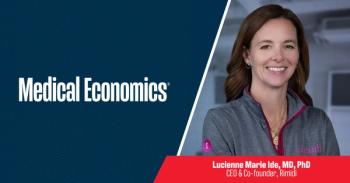
Three ways to improve patient access
Key Takeaways
- Accurate data collection at registration is crucial to prevent RCM issues like delayed reimbursements and denied claims, impacting patient financial transparency.
- AI and automation can streamline workflows, reducing human error and staff burden, thus improving patient access and minimizing claim denials.
Enhance patient access with RCM strategies: streamline workflows, leverage AI, and prioritize technology to improve care delivery and operational efficiency.
We’re at a critical juncture in health care: patients increasingly expect seamless, digital-first access, yet operational gaps impact
Addressing these foundational breakdowns is no longer optional; it is imperative. Here are three ways providers can improve patient access:
- Focus on collecting accurate data on the front end
- Streamline manual workflows with AI and automation
- Map, prioritize and scale solutions to replace outdated technology
Confusion in patient access
Most patients have never heard of Revenue Cycle Management, but providers understand all too well that RCM encompasses one of patients’ biggest barriers to care and one of providers’ biggest headaches: patient access.
For patients, access generally means not just being allowed to get care, but being able to get it easily, affordably, and in a timely way. This includes being able to easily book an appointment, view medical records and test results, and communicate with their doctor’s office or via digital portal. Access to patients is synonymous with transparency and convenience.
Providers, however, think more logistically and operationally. They often consider patient access to mean the ability for a patient to be seen by the right provider in a timely manner with no logistical hiccups. This includes appointment availability, scheduling plus insurance coverage and verification. Even more granular for providers, patient access is about efficient workflows and compliance with all the necessary and ever-changing rules and requirements associated with insurance eligibility, authorization and claims.
Bridging the patient access gap means addressing both sides of the equation: operational efficiency and a transparent patient experience, all powered by better data.
Focus on collecting accurate data on the front end
The ripple effect of inaccurate data collected at registration is profound, extending far beyond initial inconvenience. Patient information errors contribute to a host of RCM pain points, including delayed reimbursements, increased accounts receivable days, cash flow issues, and denied claims. The accuracy of cost estimates, crucial for patient financial transparency, is also declining, largely driven by the complexity of insurance coverage, evolving payer rules, and the difficulty of capturing comprehensive patient information upfront.
To combat this, providers must focus on
Technology can verify insurance and eligibility, predict errors before claim submission, and automatically identify secondary and tertiary coverage, preventing gaps and ensuring cleaner claims.
Streamline manual workflows with AI and automation
Inefficiencies are major roadblocks to increasing patient access. Manual workflows place a heavy burden on staff, consume critical time, and increase the risk of human error. These avoidable obstacles can lead to data inaccuracies and claim denials that can disrupt the entire care delivery cycle.
Front-end health care staff, such as registrars who interact with patients to collect personal and insurance information, are
In addition, tasks like manually checking for multiple insurance coverage become burdensome and can lead to data entry errors which frequently result in claim denials. While denials are often viewed as a financial problem for providers, they also negatively impact the patient journey, potentially leading to unexpected out-of-pocket costs, delayed medical care, or even entirely skipped treatments.
Map, prioritize and scale solutions to replace outdated technology
For providers that need to modernize patient access, it’s hard to know where to start. They can begin by comprehensively mapping the end-to-end patient journey. This involves gathering direct feedback from both staff and patients to precisely pinpoint specific friction points and the biggest challenges hindering a streamlined workflow. Understanding these critical breakdowns from both administrative and patient perspectives is foundational for effective improvement.
Next, prioritize for maximum impact. It’s unrealistic for providers to overhaul the entire revenue cycle process at one time. Organizations must strategically prioritize their efforts, determining which areas or "quick wins" will yield the greatest impact on both the financial bottom line and overall patient access. This ensures resources are allocated to achieve the most significant and immediate benefits.
Finally, invest in scalable technology solutions. These innovations can effectively automate core processes like eligibility verification, prior authorization, and scheduling, thereby creating a seamless workflow and significantly reducing staff effort and process delays.
By strategically embracing
Providers best positioned for progress are those that prioritize investing in technology that supports and streamlines patient access.
Newsletter
Stay informed and empowered with Medical Economics enewsletter, delivering expert insights, financial strategies, practice management tips and technology trends — tailored for today’s physicians.




